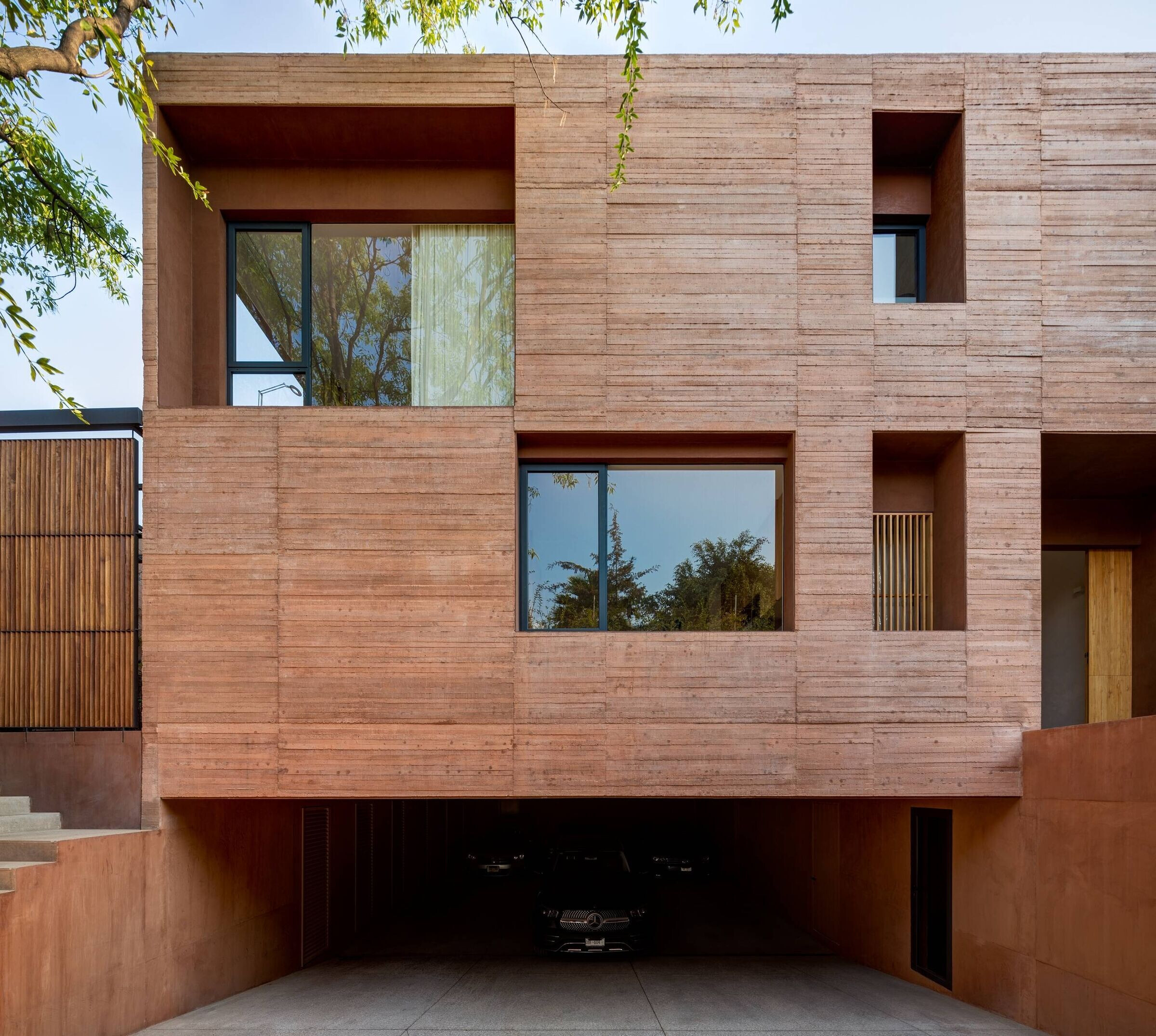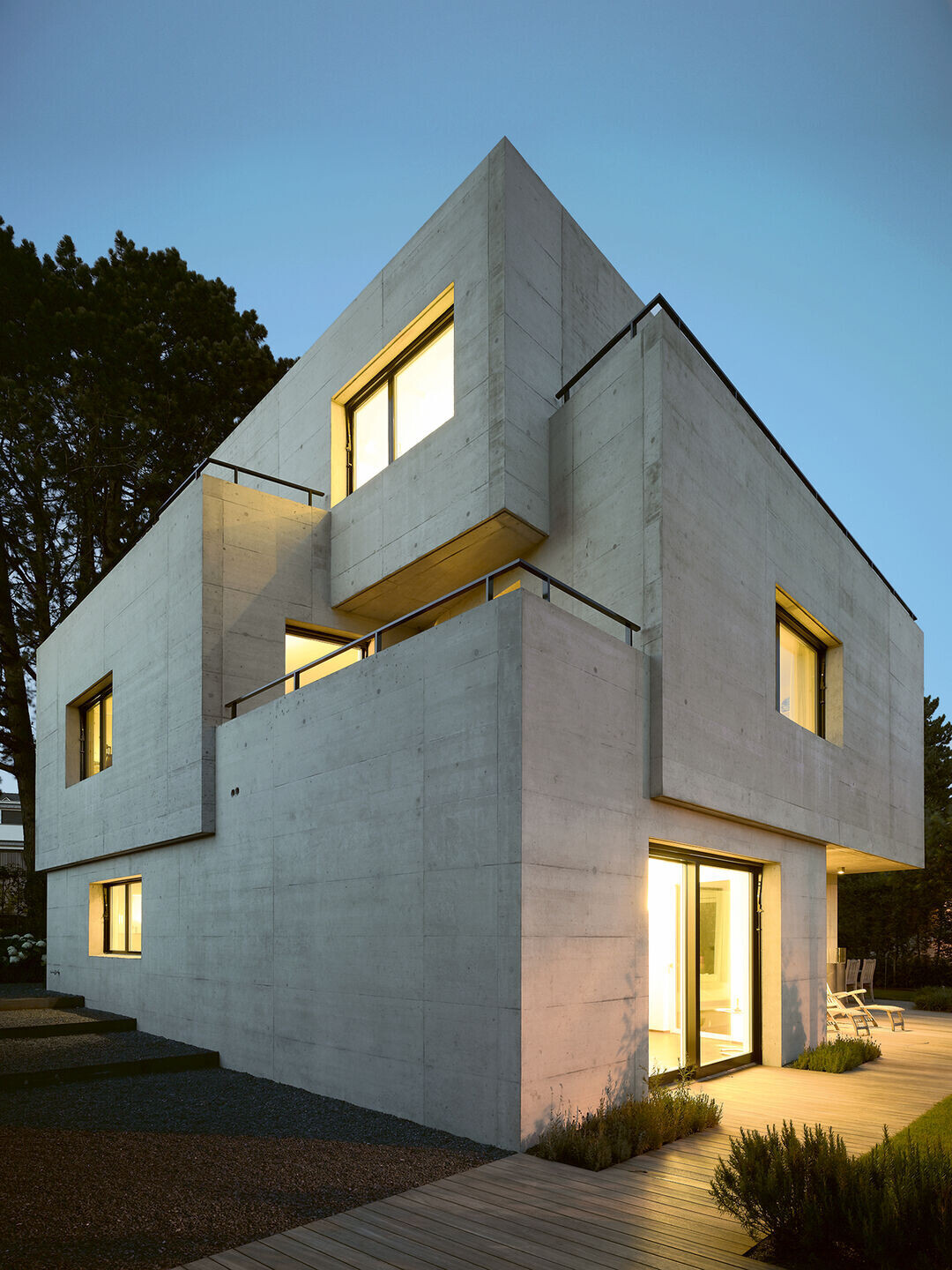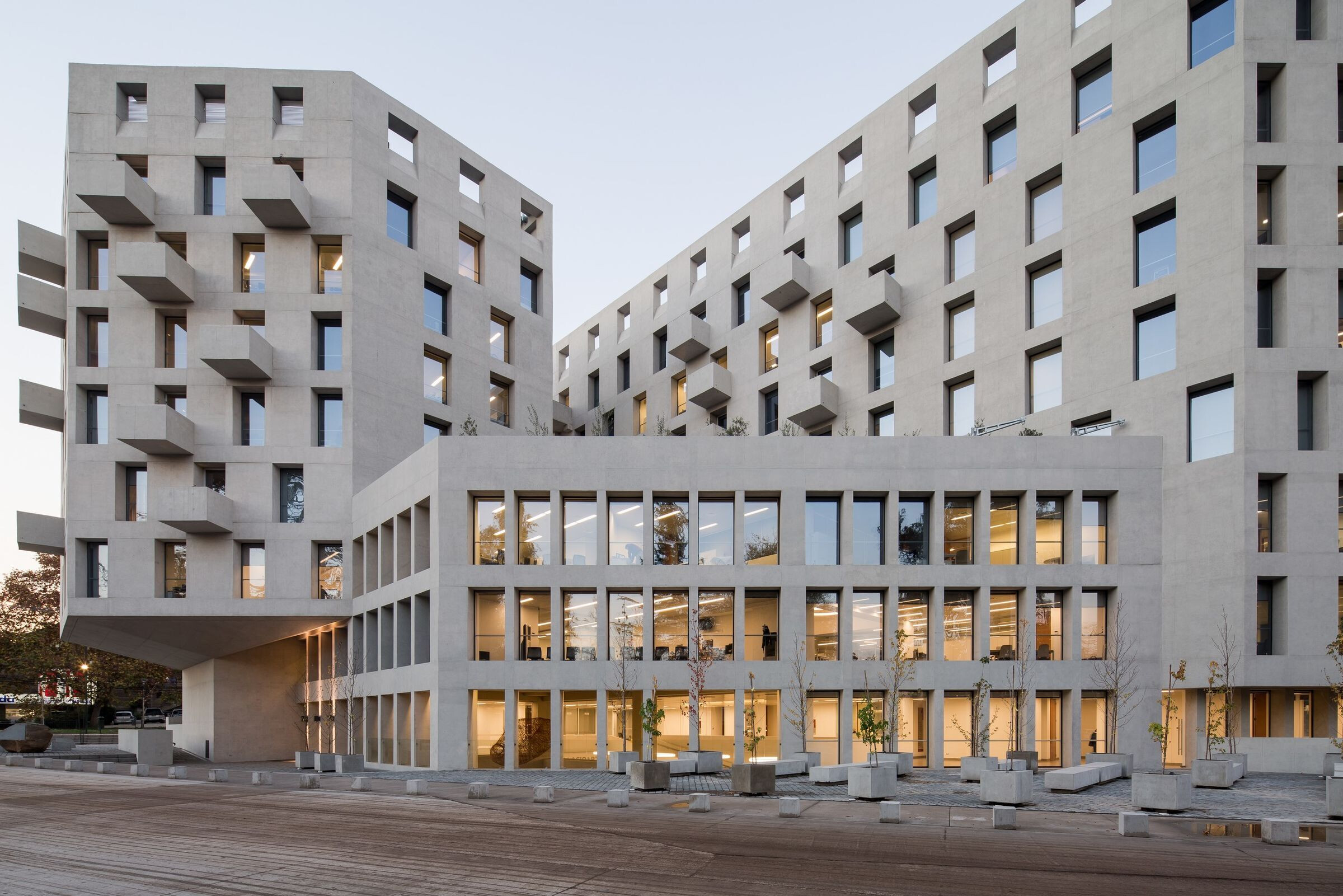
Archello houses of the month - May 2025
Archello has selected its houses of the month for May 2025. This list showcases 20 of the most... More
Versatile, tested, and proven, concrete has been employed for thousands of years in the creation of durable and long-lasting structures. Alongside this, the design freedom and customization of concrete sets it apart as a favourite of architects and designers.
Concrete is made from a mixture of aggregates, cement, water, air, and additives such as admixtures and pigments.
Comprising 60% to 80% of the concrete mix, aggregates give concrete its strength and bulk. Common aggregate types include gravel, crushed stone, slag, sand, glass, and geosynthetics. Recent advancements in the green building industry have seen a rise in the popularity of aggregates made from recycled concrete or recycled glass. Aggregates are normally divided into the categories of coarse (approximately 9.5 – 37.5 mm in diameter) to fine (less than 9.55 mm).

Typically comprising around 10% to 15% of the concrete mix, cement is the glue that coats the aggregate and holds the mix together. Cement, most commonly Portland cement, is a manufactured product that can be transported anywhere. It is a combination of materials including iron, aluminium, calcium, and silicon. Different chemical combinations result in different bonding strengths as well as the ultimate concrete colour.
Next, hydrogen and oxygen present in water create a chemical reaction called hydration with the chemicals present in the cement, transforming the cement into an agent that bonds aggregate together. The amount of water influences the total strength of the concrete. And as with any mixing process, air content is inherent in the process of creating concrete and can affect physical properties. Air typically makes up around 5% to 8% of the mix.
Finally, admixtures and colour pigments play a role in determining the overall strength, appearance, colour, and texture of concrete. Though grey tones are most commonly associated with concrete the use of pigments for colouration is becoming increasingly common. It is best to use 2% to 5% of pigment per kilo of mix and tones ranging from red to yellow, green to black to cobalt are possible.
The concrete mixture of materials above creates a slurry which will harden into the shape of the formwork. Forms are created in collaboration between the architect and a formwork team to ensure the correct specification. Formwork can be made from a wide variety of materials, resulting in a wide range of textures and appearances. Wooden formwork for example is made up of individual boards or planks. The surface nature of these boards or planks dictates the final character of the concrete, often providing an organic grain. Boards can also be pre-treated with resins or laminates to amplify a texture or alternately provide a smoother finish.

A common alternative to wooden formwork is metal with these forms offering several advantages. In particular, the nature of metal means formwork can achieve a smoother finisher than that of wood. Additionally, metal formwork is quicker/easier to set up and can be repurposed after a build. The upfront cost of metal versus wood is balanced with the speed and ease of putting up metal formwork. This means that metal formwork is used primarily on larger-scale projects where its use is most cost-effective.
Typically rebar is placed in the formwork first with slurry poured over it. Modern concrete utilizes reinforcing bars, or rebar, to make reinforced concrete with less tendency to crack. Over time the rebar will eventually oxidize and degrade the concrete however it takes decades for this to occur and most buildings last over a hundred years without any repairs.
Once cured, concrete is washed and sanded to achieve the texture sought after by the designers.
During the planning phase, it is essential to review details of the construction process from formwork to rebar, the contents of the concrete mixture, the pre-dimensioning of the structure, and the integration of elements such as eaves and gutters.
When carefully detailed, expansion joints are much more than functional elements but can also add a sense of rhythm and texture to concrete while preventing crack lines that could emerge in the future.
The elements can certainly have a detrimental effect on the finish of concrete, especially in colder, moister climates. Because concrete is a porous material, resins, varnishes, and waterproofing, the latter particularly where hydrostatics is an issue, should be carefully considered and specified. Some of the above products are not noticeable while others add a gloss or colour tint.
Local contractor knowledge is particularly key in confirming that the composition of the concrete mix is correct for a particular climate. Further, proper design of architectural elements for a climate such as overhangs over expansive façade areas in wet zones is essential.
The future of concrete:
Today, new formulations of cement and aggregates afford thinner applications of concrete and an increase in the number of shapes and forms that can be achieved.
Key advancements include the advancement of ultra-high-performance concrete (UHPC), also known as reactive power concrete (RPC). Developed for strength and ductility, this advancement can achieve compressive strengths up to 29,000 psi with a flexural strength of 7,000 psi, offering a capacity to deform and support both flexural and tensile loads in a way that until recently had not been possible.

Light-transmitting concrete is embedded with optical fibres that run from one section of concrete to another, effectively transmitting light from one side to the other and showing the impressive material consistency of concrete. Self-cleaning concrete meanwhile is made possible by adding particles of titanium dioxide to cement. While still functioning like typical standard Portland cement, the addition of this chemical works with sunlight to break down pollutants on the surface of the concrete.

Finally, sustainability is certainly central to any future material conversation. Examples of advancements in this area include permeable concretes that allow for rainwater to efficiently absorb into the earth, greater availability of recycled materials that can be incorporated into the concrete mix, the promotion of local manufacturing of concrete and cement, rigorous life-cycle analysis, and design strategies that consider the potential thermal mass of concrete in passive energy performance.
Archello has selected its houses of the month for May 2025. This list showcases 20 of the most... More
Maximize Your Reach with ArchelloExplore powerful promotional opportunities designed to drive visibi... More
Archello invites architecture firms worldwide to submit their mid-rise residential projects for the... More
Meet visionaries set to shape the Archello Awards 2025 jury. Archello is thrilled to welcome four po... More


